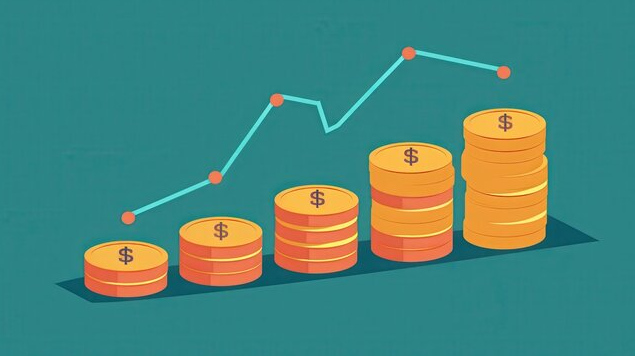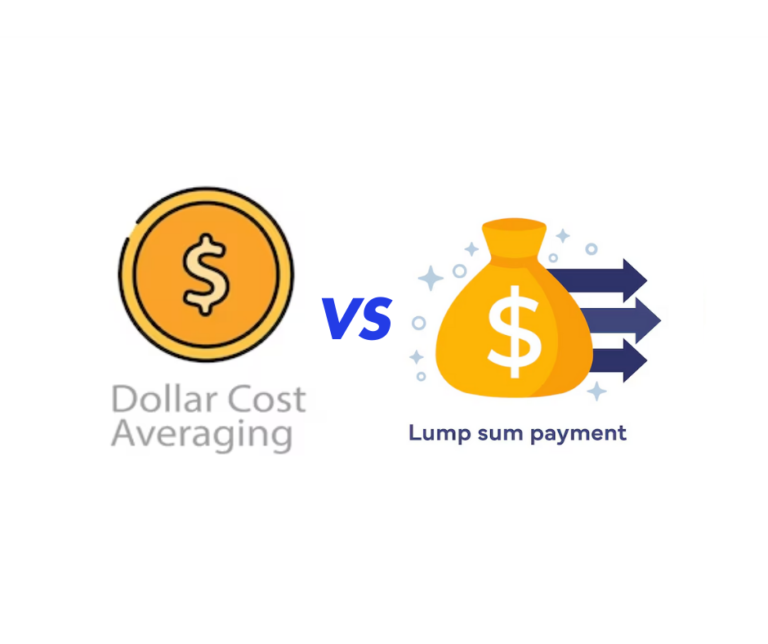Introduction
Market fluctuations are the most feared challenges to investors. Here is where DCA comes in; that is, dollar-cost averaging. DCA is a rather simple but very powerful strategy of investing without risks. It helps equalize risks for the investor through increasing investments gradually over time. It can reduce the impact of the prevailing price fluctuation, and, therefore, it really works well for beginners as well as those who look at the risk-choice.
What is Dollar-Cost Averaging?

Dollar-Cost Averaging is where an investor invests a fixed amount of money in a particular asset, such as stocks, at regular intervals. In the process, the amount invested regularly at intervals determines and controls the average cost of that investment. This is done over successive intervals over a period of time, such as monthly or weekly, reducing the severity of short-term market volatility in investments.
Under the strategy, investors buy fewer shares when prices are high and more shares when the prices are relatively low. The strategy eventually leads to an average price paid and may pay a lower purchase price than if the investor had attempted to time the market.
How Does Dollar-Cost Averaging Work?
Here‘s a step-by-step view of how dollar-cost averaging works:

- Determine Your Investment Amount: Choose a fixed amount that you are comfortable investing every month, $100.
- Investment to Be Chosen: This will be the stock, ETF, or cryptocurrency that you choose. It’s essential you pick something you feel good about long-term.
- Set an investment schedule: Invest at a regular frequency, perhaps every month, biweekly, or weekly.
- Stick to the Plan: Invest the same amount every period, irrespective of how the market is performing.
An investor gets shares at different prices at different points in time, thus avoiding locking an excess sum in an unfavorable price point.
Benefits of Dollar-Cost Averaging
Several advantages make DCA a highly sought-after investment option for the novice as well as the most experienced investors:

1. Reduces the impacts of market volatility
The many changes in the market that create wide fluctuations in the price can be averaged out with DCA. Since when the price is lower, one buys more units, and when the price goes higher, one buys fewer units, then the average cost per share tends to average out over time.
2. Removes overpowering self-contradictory behaviour
Inevitably, investors become emotional in their investments. They buy high, merely because they get excited, or sell low as they fear dropping prices. However, by “dollar averaging”, the influence of emotion is overcome through the disciplined application of investing without consideration of market trends.
3. Long-Term Investment
Dollar-cost averaging is specifically suitable for long-term investors. The investment approach is suitable for investment horizons wherein the investor makes wealth over time without being too concerned about daily market fluctuations.
4. Suitable for all investors
Even beginners, dollar-cost averaging can work out as a flexible strategy for almost every portfolio. As long as someone invests systematically, anyone can start building wealth without having to require a considerable sum of money to begin with.
Dollar-Cost Averaging vs. Lump Sum Investing
While DCA distributes investments over time, lump sum investing means a sudden, large amount of investment. Of course, the merits of both have demerits on the side.

- Lump Sum Investing: Best in bull markets, especially when asset prices continue shooting up. This investment tends to yield higher amounts in case it is timed properly.
- Dollar Cost Averaging: It performs fairly decently when the markets are volatile or bearish. It also decreases the risk of bad timing, so you are consistently investing.
The choice between the two depends more on what your financial goals are, how much you’re willing to take in terms of risk, and the general state of the markets.
Examples of Dollar-Cost Averaging in Action
Let’s consider a practical example to illustrate Dollar-Cost Averaging. Imagine you decide to invest $100 each month in a stock over a 5-month period:
| Month | Stock Price | Amount Invested | Shares Purchased |
|---|---|---|---|
| Jan | $10 | $100 | 10 |
| Feb | $12 | $100 | 8.33 |
| Mar | $8 | $100 | 12.5 |
| Apr | $10 | $100 | 10 |
| May | $9 | $100 | 11.11 |
In this scenario, you’ll have purchased a total of 51.94 shares over five months at an average cost of $9.62 per share, regardless of the stock’s volatility.
When is Dollar-Cost Averaging a Good Strategy?
DCA works best in the following situations:

- Volatile or uncertain markets: In markets that are characterized by wild price swings, DCA reduces the risk associated with market timing.
- Long-term objectives: When investing with a five-year or more horizon, DCA will come in handy to gradually accumulate your portfolio.
- Limited Capital: DCA allows people with modest amounts of money to begin investing rather than waiting until they have more money in the bank.
Pros and Cons of Dollar-Cost Averaging

Pros:
- Reduces the possibility of a market timing.
- Minimizes the emotional stress of investing.
- Helps in building discipline through consistent investing.
Cons:
- Might miss the bull market due to its process.
- Escalates more slowly compared to lump sum investing during a rising market.
- Transaction fees can add up if not well managed.
How to Start Dollar-Cost Averaging
If you are willing to start applying dollar-cost averaging, you should know these tips:

- Budget Amount: Set the amount that you can consistently invest without affecting your financial security.
- Low-fee investments: Frequent investments in various options incur high transaction fees; therefore, look for platforms that offer low– or no-fee options.
- Monitor But Do Not Meddle Too Much: Monitor your investments at regular intervals, but do not tinker too much with your plan.
Where to Do Dollar Cost Averaging?
Conclusion: Is Dollar-Cost Averaging Right for You?
Dollar-cost averaging is a very practical approach for any would-be investor focused on minimizing risk but building wealth day after day. The best approach for an investor who would wish to invest continuously without ever having to think about the timing of the market is DCA, which means an avenue in which long-term wealth is built with exposure to much less volatility in the market.
FAQs
Does Dollar-Cost Averaging guarantee profits?
Answer: No, DCA does not guarantee profits. It simply reduces the impact of market volatility and can help lower the average cost of investments over time. However, like any investment strategy, DCA is subject to market risks, and returns depend on the performance of the chosen assets over time.
What amount should I invest with Dollar-Cost Averaging?
Answer: The amount you invest should be manageable within your budget and financial goals. It can be as little as $50 per month or as much as you’re comfortable committing regularly. The idea is to stick to a fixed amount you can consistently invest over the long term.
Can I stop Dollar-Cost Averaging at any time?
Answer: Yes, you can stop Dollar-Cost Averaging at any time if your financial goals or market conditions change. DCA is a flexible strategy, so you can choose to pause or adjust it as needed. However, stopping or frequently changing the investment amount can affect the strategy’s overall effectiveness.

Owner of Paisewaise
I’m a friendly finance expert who helps people manage money wisely. I explain budgeting, earning, and investing in a clear, easy-to-understand way.


Pingback: Investing in the S&P 500: What You Need to Know - Paisewaise
I’m appreciative for the illustrations you shared; they made it easier to understand.
Your website has rapidly become my favorite source for inspiration. Thank you for sharing your thoughts.
Pingback: Stock Market Basics: How to Start Investing in 2025